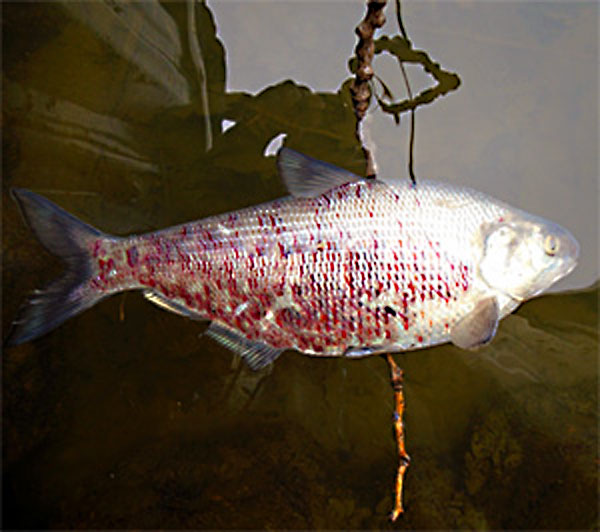UPDATE May 24, 2013: See – Indiana DNR Allows Three Hooks on Umbrella Rigs
Indiana DNR director Robert E. Carter Jr. has signed a temporary rule that establishes a limit on the number of hooks allowed on a rig or lure array used for sport fishing, essentially making so-called umbrella rigs like the Alabama Rig legal through the remainder of 2012.
UPDATE May 24, 2013: See – Indiana DNR Allows Three Hooks on Umbrella Rigs
Indiana DNR director Robert E. Carter Jr. has signed a temporary rule that establishes a limit on the number of hooks allowed on a rig or lure array used for sport fishing, essentially making so-called umbrella rigs like the Alabama Rig legal through the remainder of 2012.
Until recently, umbrella rigs were a traditional saltwater trolling apparatus used effectively in the northeastern United States to catch striped bass and bluefish, according to Ken Smith’s Fishing Encyclopedia.
The rig is an umbrella-shaped frame of multiple wires from which lures or hooks are attached. It is designed to resemble a school of baitfish.
Professional bass fisherman Paul Elias triggered a frenzy among freshwater anglers when he used a version of the apparatus, The Alabama Rig, to win an FLW Series national tournament in October. Elias caught a 20-fish limit weighing more than 100 pounds to beat his closest challenger by 17 pounds and earn the tournament’s $100,000 first-place prize.
Bass Anglers Sportsmen Society (BASS), the FLW’s rival tour, announced in January that umbrella rigs cannot be used in the Bassmaster Classic or the Bassmaster Elite Series.
In the meantime, states have been scrambling to see if umbrella rigs fall inside or outside of their fishing regulations.
Indiana’s existing rules do not adequately describe whether or not umbrella rigs are legal. Indiana Administrative Code 312 IAC 9-7-2 states that “an individual may take fish with not more than three poles, hand lines, or tip-ups at a time�(and) an individual must affix to each line not more than: two hooks, two harnesses for use with live bait, or two artificial baits.
The ambiguity with the umbrella rig is whether it should be defined as one lure with many parts or many lures on single line.
As DNR officials continue to study the issue, the temporary rule adds a fourth option to the existing regulation that allows “one rig or lure array for use with multiple artificial baits with not more than five hooks.”
The temporary rule expires on Jan. 1, 2013.
“This gives Hoosier anglers an opportunity to gain first-hand experience with the use and effectiveness, or drawbacks, of how umbrella rigs actually perform,” Carter said. “It also gives the DNR time to gather information on what, if any, future definitions or restrictions need to be considered.”
The temporary rule does not apply to trout and salmon streams that are tributaries of Lake Michigan or to the St. Joseph River downstream of the Twin Branch Dam in Mishawaka. The regulations on those waters continue to be limited to one single hook, one harness for use with live bait, or one artificial lure per line. Single hooks, including those on artificial baits, must be no larger than 1/2 inch front point to shank. Double and treble hooks on artificial lures may not exceed 3/8 inch from point to shank. All trout and salmon taken in Indiana must be hooked in the mouth (no foul hooking allowed).
Source: Indiana DNR Press Release 2/27/2012 – http://www.in.gov/activecalendar/EventList.aspx?view=EventDetails&eventidn=53486&information_id=107277&type=&syndicate=syndicate


